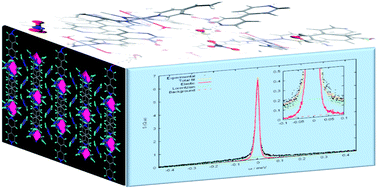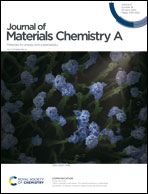A Co(ii)-coordination polymer for ultrahigh superprotonic conduction: an atomistic insight through molecular simulations and QENS experiments†
Abstract
Proton conducting materials are key components in proton exchange membrane fuel cells for clean energy research. Most such conducting crystalline materials (MOFs/CPs/COFs/HOFs) show limited practical application due to the multistep synthesis of organic ligands and usage of hazardous solvents. To look for simple and highly efficient crystalline proton conducting materials, we present herein a coordination polymer, PCM-1, based on a positively charged [Co(bpy)4(H2O)2]2+ (bpy = 4,4′-bipyridine) backbone. The presence of a cationic unit, anionic nitrates, as well as coordinated and adsorbed water molecules is demonstrated to play a significant role in the water-assisted ultrahigh superprotonic conduction properties. PCM-1 displays a conductivity value of over 10−2 S cm−1 at 98% relative humidity (RH) and 80 °C without any loss of performance over multiple cycles, ranking among the most promising proton conducting materials in the domain of MOFs/CPs/COFs/HOFs. Quasi-elastic neutron scattering (QENS) and molecular simulations were further combined to gain a better understanding of these properties at the molecular level. This joint experimental/modeling study revealed water-assisted proton dynamics through the formation of a long-range H-bonded network mediated by a Teixeira jump diffusion model. Furthermore, this material was shown to be highly stable and easily scalable using a green and simple synthesis process.



 Please wait while we load your content...
Please wait while we load your content...